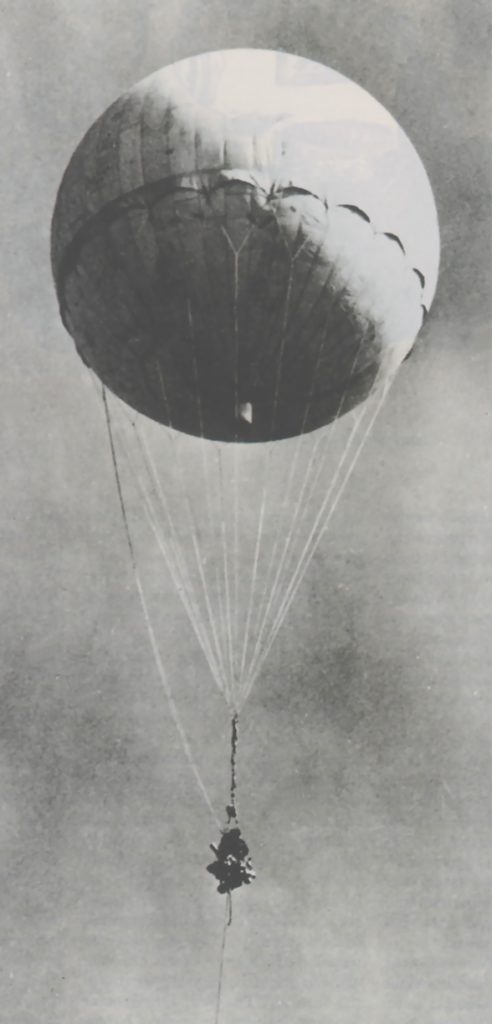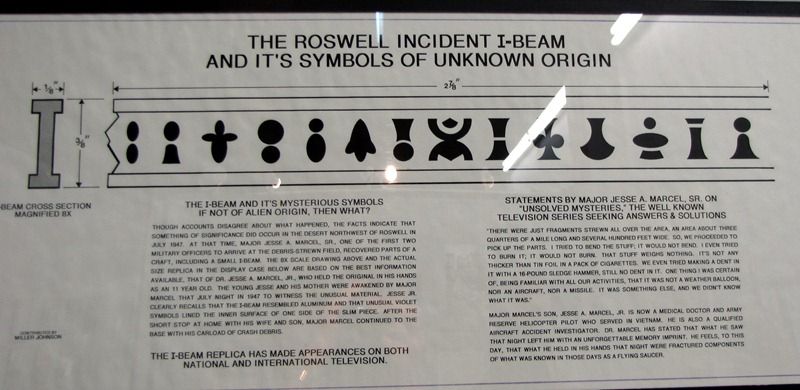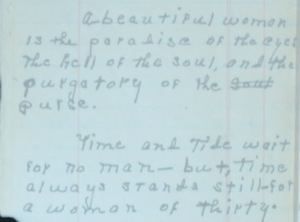Following my recent posts about how the 1947 Roswell Incident strongly fits the template for a cipher mystery, I’ve moved on to wondering how arch-Ufologist Nick Redfern’s profoundly non-Ufological theory (where, according to his “Black Widow” witness, the debris found in Roswell was actually caused by the crash of some kind of high-altitude balloon experiment using disabled Japanese people as live test subjects) fits into this. The challenge is how to temper Redfern’s effusive research enthusiasm with actual historical insight: can we build up a reliable picture of the things that might have contributed to his story?
I’ve therefore been reading books that try to build up solid factual accounts of the historical contexts into which Redfern would like his narrative inserted. Which is important because there remain many aspects of his books I’m still extraordinarily uncomfortable with.
Ross Coen’s “Fu–go: The Curious History of Japan’s Balloon Bomb Attack on America”
Though written in a comfortably US-archive-centric popular history vein, Coen’s book is actually a nice, easy read that covers a lot of ground (all the way from Mexico to Alaska, in fact) in understanding how Japan’s war-time balloon bomb blitz was responded to in America.
Perhaps unwittingly, Coen works hard to pop a lot of the balloon-based conspiracy bubbles that Redfern notes floating around the edges of the discourse. For example, he says that:
- the Japanese top brass halted the balloon programme simply because – thanks to the US news blackout on balloon bomb explosions – the people running the programme couldn’t supply them with any solid proof that the 9,000 Fu-go balloons they had launched had militarily achieved anything;
- there was no plan for bigger, bolder, better balloon bombs – claims to that effect were in fact just part of internally-focused Japanese propaganda aimed at its own people
- despite American fears that the balloon bombs might be a precursor to a far more deadly Bacteriological Warfare attack from the skies, this simply wasn’t part of what was planned at all.
- it wasn’t direct & deliberate American attacks on Japanese hydrogen plants that made things logistically difficult for the Japanese balloon bomb makers, but instead ruptures to their train lines and widespread supply shortages
For me, the biggest takeaway from Coen’s book was simply how well the Americans came to understand (and indeed appreciate) the inner workings of the Japanese balloon bombs: their fuses, their internal wiring, their ‘wheel’, their battery, their antifreeze, etc. The Fu-go balloon bomb was in many ways a masterpiece of low-cost engineering and pragmatic ingenuity, coupled with solid meteorological understanding and actually quite daring thought.
Yet given that the US Military went on to build its own balloon bombs (though with a bacteriological warfare payload) from 1950 onwards, one of the broader questions I had before reading Coen’s book was to do with whether the Americans would have needed help from Japanese engineers to get them to 1950. But, perhaps surprisingly, the answer to that seems to be a resounding no: by the end of the War, the US Military had been able to reverse-engineer everything they needed to know about the Fu-go balloons.
Moreover, you finish Coen’s book somewhat reassured as to the idea that these balloons could have been used for waging Bacteriological Warfare: in his account, this seems to have been primarily a US Military defensive fear, that by 1950 was then redirected into an offensive (in both senses of the word) opportunity.
Amanda Kay McVety’s “The Rinderpest Campaigns”
Unfortunately for Coen, McVety’s book reports (p.73, footnote 86) the 1990 testimony of Noboru Kuba, who started work at the Noborito Research Institute in 1943 to create an “acute contagious disease” to infect cattle, and to use that toxin to bring America to its knees. Kuba reported carrying out tests on a group of cows in Busan (in Korea), all ten of which died ten days later, thus proving that it did what they hoped it would.
In Kuba’s recounting, the development of the toxin happened in parallel with the Fu-go balloon bombs, but it was clear to many in the Imperial Japanese Army that the two technologies were a good match for each other. And so the proposal was made in September 1944 to use 20 tons of rinderpest toxin as the payload for Fu-go balloon bombs. However, this was rejected by Hideki Tojo, a former prime minister (and by then general), on the grounds that the Americans would likely retaliate against Japan’s rice crop in the harvest season, causing enormous problems.
What this throws up is that Coen’s book relies heavily on the post-war Compton Report, which (as Mercado makes clear in “The Shadow Warriors of Nakano”, a fascinating read too) was weakened to the point of uselessness not only by the immediate burning of just about all the documentary evidence that could be burned, but also by the deception and lack of cooperation of the (now-suddenly-former) Noborito Research Institute members.
And yet at the same time, the US Military seems not to have known about any of this at the time. All the interesting Big Conspiracy Theories about this period tend to focus on the miserable Mengele-like atrocities inflicted by The Imperial Japanese Army’s Unit 731 upon the people of the Japanese puppet state on mainland China, which perhaps suggest why Nick Redfern got so caught up with that side of the history.
It’s certainly true that a number of Unit 731 personnel were given something not entirely unlike an amnesty, and that it is likely that a good few were swooshed – Operation Paperclip-style – into America not long after the war. So it’s certainly possible that some of these awful, immoral, dehumanised Japanese ‘scientists’ from Unit 731 contributed to the US Military’s research in the post-war years. Having said that, perhaps more relevant to American Bacteriological Warfare research would have been the activities of Unit 100 (elsewhere on mainland China), which focused on anthrax, glanders, and red rust.
But all the same, I think the picture that emerges here about what was happening is quite unlike the one presented by Redfern in yet different ways from the one presented by Coen.
Tularosa Balloons
Speculative stuff aside, the account given by Nick Redfern’s “Black Widow” witness (who claims to have worked at Oak Ridge) is actually rather specific. The core of her story is a series of unethical high-altitude balloon tests carried out at night in May, June, and July 1947 at Tularosa on fifteen live (but anaesthetised) subjects, with horrific and fatal results.
It’s no secret that the Tularosa Basin was indeed used for American high-altitude balloon experiments from 1945 onwards, such as Project MANHIGH III. In his book “The Pre-Astronauts” (which I haven’t yet read, though I’ve ordered a copy), Craig Ryan notes (quoted here):
“One of the first postwar manned balloon flights sponsored by the military was launched from the Tularosa Basin in 1947 with the intent of crossing the Rockies and landing somewhere along the Eastern Seaboard. Unfortunately, the entire flight’s supply of ballast was expended in the crossing of the Sacramento range to the east of Alamogordo and the balloon’s journey ended just short of Roswell.”
So it seems eminently clear that US Military balloon experiments – that is, ones specifically involving people, so not weather balloons or Project MOGUL – were not only launched from Tularosa in 1947, but were also in range of Roswell. Even if how these things mesh together isn’t yet clear, Tularosa is certainly not an entirely unreasonable launchpad.
“A Small Island in the Pacific”
Separately, Redfern’s Black Widow claims that these test subjects were “acquired […] in early 1945 after a battle between American and Japanese troops on a small island in the Pacific”, where the Americans discovered “a small medical laboratory where Japanese doctors and scientists were conducting all manner of atrocities on both physically and mentally handicapped people”.
Where could this have been? If we roll the clock back to 1944 (note the sentence says “in early 1945 after a battle”, so the battle itself could easily have been in 1944), the battles that fit the timeline are:
- Feb 1944: Battles of Kwajalein and Eniwetok
- Summer 1944: Marianas Islands – Guam, Saipan, Tinian
- Feb-Mar 1945: Iwo Jima
- Apr-Jun 1945: Okinawa
The timeline and size seems to rule out Okinawa, the volcanic Iwo Jima seems a highly unlikely location, and Kwajalein and Eniwetok seem to have been too small and too early. So it seems that we are being pointed towards the Marianas Islands: and because Guam had been taken from America by the Japanese in 1941, that too seems unlikely, while the third major Marianas island (Rota) remained under Japanese control.
All of which seems to leave us two specific islands to look at: Saipan and Tinian – you may recognise Tinian as being the island whose airstrip the B-29 Enola Gay famously took off from in August 1945. And so I’ve also ordered myself a copy of Gordon Rottman’s “Saipan & Tinian 1944: Piercing the Japanese Empire”, which should be an interesting read.
Pinning the Tail on the Axis Donkey?
I think it’s important to say that if there were unethical high-altitude balloon experiments going on in 1947, the issue of whether they involved “Japanese doctors and Nazi doctors” is entirely secondary. Unlike Unit 731’s shocking experiments on non-volunteered Chinese subjects carried out on the Chinese mainland, or Unit 100’s experiments on cattle on the Chinese mainland, or Noboru Kuba’s experiments on cattle in Korea, these would have been American tests on American soil, commissioned and carried out by the US military, making it impossible to ‘export’ any ethical failings of those tests. Furthermore, you don’t have to look much further forward along the military timeline to see the 1960s controversy over the US testing of Agent Orange in Okinawa, where all these themes would recur.
In short, if there was any unethical science going on in Tularosa in 1947, it would first and foremost have been American unethical science. So all in all, doesn’t it sound somewhat as if someone somewhere is trying to unpin the blame from themselves, and instead pin it on questionable Axis scientists (who may or may not exist)? Or if not on them, then on extra-terrestrials, hmmm?




